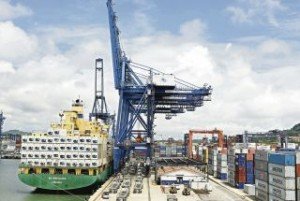
(Prensa.com) Central America will have a real growth of about 4%, which is largely driven by Panama, Costa Rica and Nicaragua, said on Tuesday, March 27, the Central Institute for Fiscal Studies (ICEFI) .
The three remaining nations, El Salvador, Guatemala and Honduras, in contrast, have a growth of between 2.2% and 3.5%, said today Efe ICEFI executive director, Hugo Noe Pino, president of the Central Bank of Honduras .
The economic outlook for the region are listed in the fourth edition of “American Fiscal Lens” of ICEFI that Pino and other fiscal agency executive, Jonathan Menkos Zeissig, presented today in Tegucigalpa and then make the rest of the region.
The report entitled “Central to the crisis: can we do more to wait?” Captures various aspects of the American economy and an analysis of global economic growth estimates for 2012, which also indicates that the activity has deteriorated in recent months.
“Probably the most complex at the moment is what is happening in the international economy,” said Efe Menkos Zeissig, who also stressed that “the epicenter of the big problems is the euro area”.
He added that the difficulties to overcome the economic crisis have to do with that major challenges remain in terms of the financial weakness of the world system in general, especially in developed countries but also in extremely high levels of unemployment.
He noted that now “developed countries have very weak fiscal accounts to face that reality, a bit contrary to what happened at the beginning of the crisis (in 2008), when all the countries decided to save many of the banks and that there was a significant expansion in public debt. ”
He added that although growth rates in Central America show an incipient recovery, with the exception of Panama, which is a leader in growth, and to some extent in Nicaragua, Northern Triangle countries (Guatemala, El Salvador and Honduras) face medium-term situation very complicated for the coming years.
Growth projections-from 2% to 4% – of El Salvador, Guatemala and Honduras, which make up the so-called northern triangle of Central America, are insufficient to reduce poverty and unemployment and, therefore, to generate welfare conditions in the population of the three nations, said Pino.